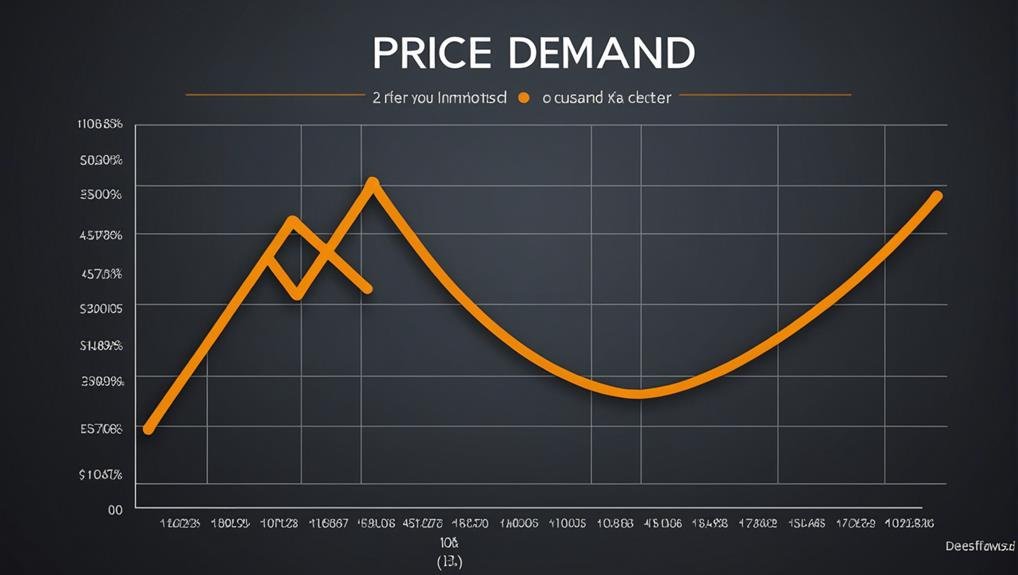Demand Curves: What Are They, Types, and Example
Demand curves in economics showcase the relationship between price and quantity demanded, essential for market insights. They can be elastic due to factors like substitutes, impacting business pricing strategies. For instance, a luxury watch price cut led to an increase in demand, revealing high price elasticity. Understanding these curves helps in anticipating consumer responses to price changes, guiding pricing decisions. Exploring the various types and factors influencing demand curves aids in strategic market analysis, vital for business success. Discover more about demand curves and their significance in shaping consumer behavior and pricing strategies.
Key Takeaways
- Demand curves illustrate the inverse relationship between price and quantity demanded.
- Types include elastic and inelastic, crucial for understanding consumer behavior.
- Factors like income, preferences, and substitutes influence demand curve shifts.
- Example: Price reduction leading to increased quantity demanded showcases demand curve movement.
- Understanding demand curves aids businesses in pricing strategies and market analysis.
Definition and Characteristics of Demand Curves
Demand curves serve as a fundamental tool in economics, illustrating the inverse relationship between price and quantity demanded through a graphical representation. These curves exhibit specific characteristics essential for analysis. They visually represent market behavior by showing how quantity demanded changes in response to price variations.
The downward slope of demand curves signifies the law of demand, where as price decreases, quantity demanded increases. Understanding these characteristics aids in predicting consumer behavior and market outcomes. By analyzing demand curves, economists can make informed decisions regarding pricing strategies, production levels, and resource allocation.
This visual representation of demand is vital for businesses and policymakers to grasp the dynamics of supply and demand within a market economy.
Types of Demand Curves
Illustrating various facets of consumer behavior and market dynamics, different types of demand curves provide valuable insights into the interplay between price and quantity demanded. In elasticity analysis, demand curves can be classified as elastic, where quantity demanded is highly responsive to price changes, or inelastic, where quantity demanded shows minimal response to price variations.
Market dynamics play a significant role in shaping these demand curve types, with factors such as the availability of substitutes influencing elasticity. Understanding these variations in demand curves is essential for businesses to strategize pricing and anticipate consumer behavior accurately.
Factors Influencing Demand Curve Shifts
In analyzing market dynamics, the factors that trigger shifts in the demand curve are pivotal for businesses seeking to understand consumer behavior and optimize pricing strategies. Various factors can influence demand curve shifts, including changes in consumer income, preferences, prices of related goods, population demographics, and advertising or marketing efforts.
For instance, an increase in consumer income often leads to a rise in demand for normal goods, shifting the demand curve to the right. Additionally, shifts in market trends, such as technological advancements or shifts in consumer preferences, can also impact demand curve movements. Understanding these factors is essential for businesses to anticipate and adapt to changes in consumer demand, thereby enhancing their competitiveness in the market.
Example of Demand Curve Movement
An insightful case study of a product's pricing strategy can vividly demonstrate the intricate movements of a demand curve in response to varying market conditions.
For example, consider a luxury watch manufacturer that decides to reduce its prices by 20%. This price cut leads to a noticeable shift in demand, with an observable increase in the quantity of watches demanded by consumers.
The price elasticity in this scenario is relatively high, indicating that consumers are responsive to price changes when it comes to luxury watches.
Understanding this shift in demand and the price elasticity associated with it is essential for the company to make informed pricing decisions and forecast demand accurately in the future.
Importance of Understanding Demand Curves
The comprehension of demand curves is paramount for businesses seeking to strategically price their products and accurately predict consumer behavior.
- Market Analysis: Understanding demand curves aids in conducting thorough market analysis, identifying trends, and making informed business decisions.
- Pricing Strategies: Knowledge of demand curves helps in devising effective pricing strategies that maximize revenue and profitability.
- Consumer Behavior Prediction: By analyzing demand curves, businesses can anticipate how consumers will respond to price changes, enabling them to adjust their marketing strategies accordingly.
Understanding demand curves is a fundamental aspect of market dynamics, influencing pricing strategies and overall business success. By delving into demand curve analysis, companies can gain valuable insights into consumer preferences and behaviors, leading to more effective decision-making processes.
Conclusion
To sum up, demand curves serve as indispensable tools in economic analysis, shedding light on the complex relationship between price and quantity demanded.
By delineating the impact of various factors on consumer behavior, demand curves offer valuable insights into market dynamics.
Through a meticulous examination of types, shifts, and real-world examples, a nuanced understanding of demand curves emerges, underscoring their pivotal role in shaping market behaviors and informing strategic decision-making processes.







